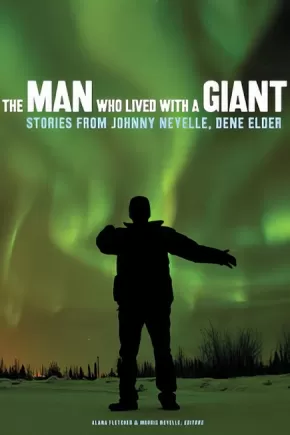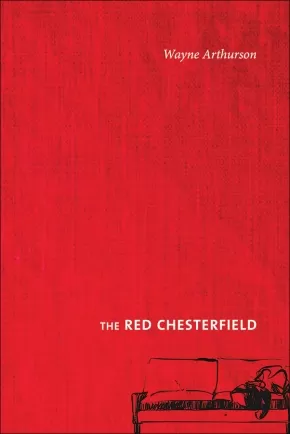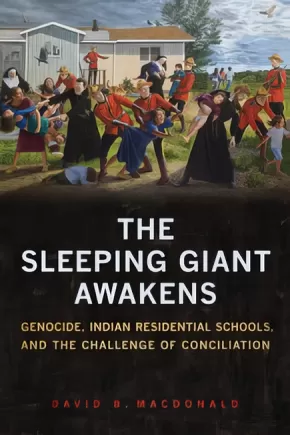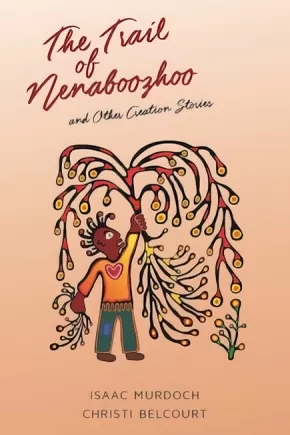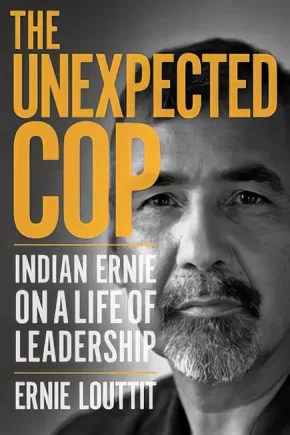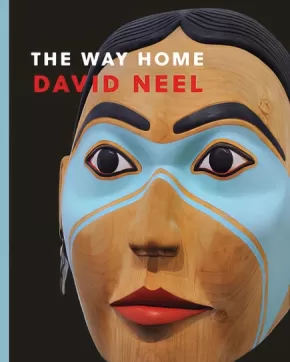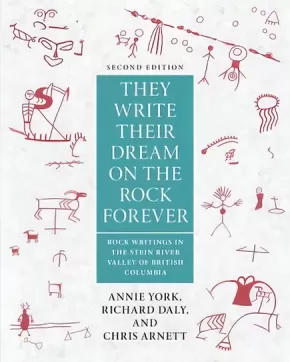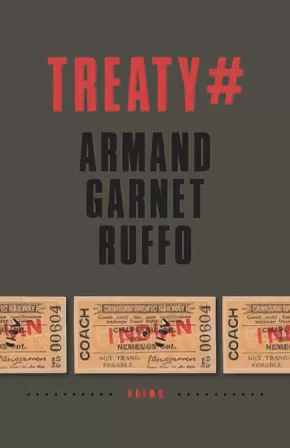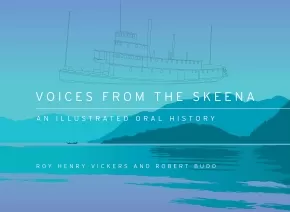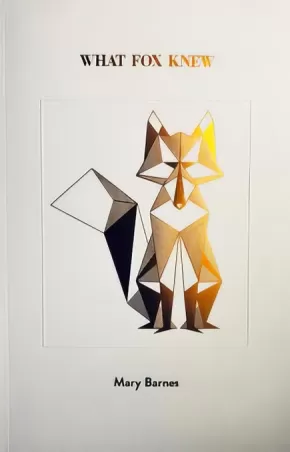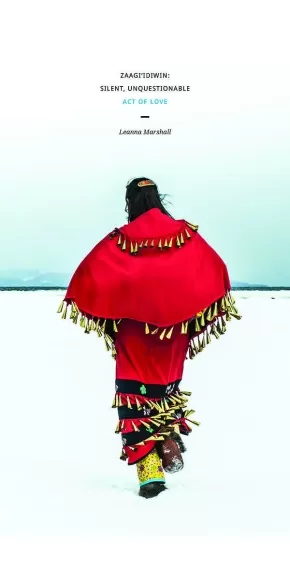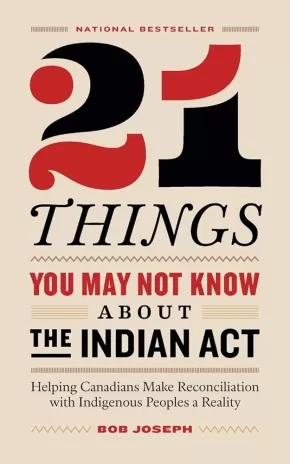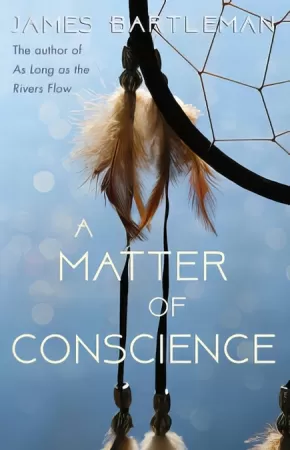
First Nations
526
-
540
of
786 Results;
Sort By
Go To
of 53
The Man Who Lived with a Giant: Stories from Johnny Neyelle, Dene Elder
$27.99
Editors:
Format:
Paperback
Text Content Territories:
Indigenous Canadian; First Nations; Dene;
ISBN / Barcode: 9781772124088
Synopsis:
Synopsis:
Our parents always taught us well. They told us to look on the good side of life and to accept what has to happen.
The Man Who Lived with a Giant presents traditional and personal stories told by Johnny Neyelle, a respected Dene storyteller and Elder from Déline, Northwest Territories. Johnny Neyelle used storytelling to teach Dene youth and others to understand and celebrate Dene traditions and identities. Johnny’s entertaining voice makes his stories accessible to readers young and old, and his wisdom reinforces the right way to live: in harmony with people and places. Storytelling forms the core of Dene knowledge-keeping. A volume dedicated to making Dene culture strong, The Man Who Lived with a Giant is a vital book for Dene readers, researchers working with Indigenous cultures and oral histories, and scholars preserving Elders’ stories. Even more, it is a book for the Dene people of today and tomorrow.
Additional Information
152 pages | 6.00" x 9.00"
The Red Chesterfield
$18.99
Format:
Paperback
ISBN / Barcode: 9781773850771
Synopsis:
Synopsis:
Gangsters. Yard sales. Politics. A severed foot. Family. How far is one person willing to go to issue a bylaw ticket?
M is a bylaw officer, living with two brothers, in their parents' old house. While investigating a suspicious yard sale, M discovers a red chesterfield sitting in a ditch. Looking closer, M finds a running shoe-and a severed foot.
Now M is involved in a murder investigation. Meanwhile, older brother K's work for a new political party begins to seem suspicious, while younger brother J navigates the complicated world of young-adulthood, and boss Rhonda demands more and more attention, M must navigate a world of Russian gangsters and neglected wives, biker gangs and suspicious coincidences. On top of everything else, M is determined to track down the owner of that red chesterfield and make sure they get a ticket.
The Red Chesterfield is a delightful, unusual novel that upends the tropes and traditions of crime fiction while asking how far one person is willing to go to solve a crime, be it murder or the abandonment of a piece of furniture.
Reviews
"Part crime novel, part fable, part family drama, The Red Chesterfield is a compelling and inventive story which defies category. Arthurson spins a tale with dry wit and a keen descriptive eye. The Red Chesterfield is a major achievement by an important voice." - Sam Wiebe, author of Cut You Down, Invisible Dead and Last of the Independents
"The mark of any great story is when the reader never wants it to end. Wayne Arthurson’s The Red Chesterfield pulled me into an alluring world of magic and mystery, a slow tease of crisp, compelling writing. A ten!" —Peggy Blair, author of the award-winning Inspector Ramirez mysteries
Additional Information
120 pages | 6.00" x 9.00"
The Sleeping Giant Awakens: Genocide, Indian Residential Schools, and the Challenge of Conciliation
$30.95
Format:
Paperback
Text Content Territories:
Indigenous Canadian;
Grade Levels: 12; University/College;
ISBN / Barcode: 9781487522698
Synopsis:
Synopsis:
Confronting the truths of Canada’s Indian Residential School system has been likened to waking a sleeping giant. In this book, David B. MacDonald uses genocide as an analytical tool to better understand Canada’s past and present relationships between settlers and Indigenous peoples. Starting with a discussion of how genocide is defined in domestic and international law, the book applies the concept to the forced transfer of Indigenous children to residential schools and the "Sixties Scoop," in which Indigenous children were taken from their communities and placed in foster homes or adopted.
Based on archival research and extensive interviews with residential school survivors, officials at the Truth and Reconciliation Commission of Canada, and others, The Sleeping Giant Awakens offers a unique and timely perspective on the prospects for conciliation after genocide, exploring how moving forward together is difficult in a context where many settlers know little of the residential schools and the ongoing legacies of colonization, and need to have a better conception of Indigenous rights. It offers a detailed analysis of how the TRC approached genocide in its deliberations and in the Final Report.
Crucially, MacDonald engages critics who argue that the term genocide impedes understanding of the IRS system and imperils prospects for conciliation. By contrast, this book sees genocide recognition as an important basis for meaningful discussions of how to engage Indigenous-settler relations in respectful and proactive ways.
Additional Information
224 pages | 6.00" x 9.00"
The Trail of Nenaboozhoo: and Other Creation Stories (1 in stock, in reprint)
$25.00
Format:
Paperback
Text Content Territories:
Indigenous Canadian; First Nations; Anishinaabeg;
ISBN / Barcode: 9781928120193
Synopsis:
Synopsis:
Nenaboozhoo left us many gifts.
Nenaboozhoo, the creator spirit-being of Ojibway legend, gave the people many gifts. This collection of oral stories presents legends of Nenaboozhoo along with other creation stories that tell of the adventures of numerous beloved animal spirits. The Trail of Nenaboozhoo is a book of art and storytelling that preserve the legends of the Anishinaabe people. Each story is accompanied by strikingly beautiful illustrations by revered Indigenous artists Isaac Murdoch and Christi Belcourt.
Educator & Series Information
From the Forward, by Isaac Murdoch:
"Everything we have can be accredited to the gifts from the spirit world. As we are now in abrupt climate change we can see the world-wide ecological collapse happening before our very eyes. How important was the birch bark canoe? The wigwam? How important were those gifts that were given to us? I think they were very important. They were more than important; they were sacred.
And so its with great hopes and encouragement that I offer these stories as a map to understand how to go back to the old ways. The old people always said we are going to go back to the old ways and I truly believe the time is now. We mustn’t wait.
Nenaboozhoo is a spirit that was brought to the earth who is highly respected to this day by my people. They say when he was in spirit form he went through four levels of power. Through each power he went through he went back to the centre saying he didn’t want to leave. But the Great Mystery told him, “'keep going, keep going, you’re needed somewhere.'
And he made his way through those four powers and ended up on earth. His life here on earth was magical. All the rivers, all of the mountains all of the beautiful colours that we see, were created with Nenaboozhoo and his magical trail on earth. They say one day ten men will go fasting and call Nenaboozhoo back and the world will be new again.
Nothing can stop the power that is here."
This book is part of the Ojibwe History Series.
Recommended in the Canadian Indigenous Books for Schools 2020/2021 resource list for grades 7 to 12 for English Language Arts and Science.
Most stories appear in English and with an Anishinaabemowin translation, but some stories are in English only.
Additional Information
55 pages | 9.00" x 9.00" | 20 illustrations
The Unexpected Cop: Indian Ernie on a Life of Leadership
$21.95
Format:
Paperback
Text Content Territories:
Indigenous Canadian; First Nations; Cree (Nehiyawak);
Grade Levels: 12; University/College;
ISBN / Barcode: 9780889775992
Synopsis:
Synopsis:
The cop who blew the whistle on Saskatoon’s notorious “Starlight Tours,” Ernie Louttit is the bestselling author of two previous “Indian Ernie” books. He demonstrates in this latest title that being a leader means sticking to your convictions and sometimes standing up to the powers that be. One of the first Indigenous officers hired by the Saskatoon Police, he was an outsider who became an insider, with a difference. A former military man with a passion for the law, he was tough on the beat, but was also a role model for kids on the streets.
Reviews
"I read it in one sitting and it left me wanting more" - John Lagimodiere, editor and publisher of Eagle Feather News
“The author fearlessly takes on some of the most problematic public issues of the day…and confronts them with the objective practicality of a thoughtful, observant foreigner.” —Les Macpherson, former editor and columnist with the Saskatoon StarPhoenix
Additional Information
192 pages | 6.00" x 9.00"
The Way Home
$32.95
Artists:
Format:
Paperback
Text Content Territories:
Indigenous Canadian; First Nations; Kwakwaka'wakw (Kwakiutl);
ISBN / Barcode: 9780774890410
Synopsis:
Synopsis:
David Neel was an infant when his father, a Kwakwa̱ka̱’wakw artist, died, triggering a series of events that would separate him from his homeland and its rich cultural traditions for twenty-five years. When he saw a Potlatch mask carved by his great-great-grandfather in a museum in Fort Worth, Texas, the encounter caused the aspiring photographer to wonder if he could return to follow in his father’s footsteps.
Drawing on memory, legend, and his own art and photographs, Neel tells the story of his struggle to reconnect with his culture after decades of separation and a childhood marred by trauma and abuse. David returned to the Pacific Coast, where he apprenticed with master carvers from his father’s village on Vancouver Island, and his career as an author and artist took him to the United States and to Mexico, to Europe and back again to British Columbia. Along the way, he met and photographed some of the most talented artists and Indigenous people of his generation. His travels helped him grow as a man and become an accomplished and prolific artist, but they also reconfirmed the healing power of returning home.
The Way Home is a testament to the strength of the human spirit to overcome great obstacles and to the power and endurance of Indigenous culture and art.
Educator Information
This memoir is a must-read for anyone interested in Canadian art and artists, particularly Indigenous art, as well as those learning about or active in cultural revitalization in Indigenous communities.
Subjects / Themes: Indigenous Art, Canadian Art, Memoir.
This resource is recommended in the Canadian Indigenous Books for Schools 2020/2021 list for grades 9 to 12 for Art Education, English Language Arts, and Social Studies.
Caution: includes memories of domestic violence.
Additional Information
192 pages | 8.00" x 10.00"
They Write Their Dreams on the Rock Forever: Rock Writings in the Stein River Valley of British Columbia
$29.95
Format:
Paperback
Text Content Territories:
Indigenous Canadian; First Nations; Salish; Interior Salish; Nlaka'pamux (Thompson);
Grade Levels: 12; University/College;
ISBN / Barcode: 9781772012200
Synopsis:
Synopsis:
In They Write Their Dreams on the Rock Forever, ‘Nlaka’pamux elder Annie York explains the red-ochre inscriptions written on the rocks and cliffs of the lower Stein Valley in British Columbia. This is perhaps the first time that a Native elder has presented a detailed and comprehensive explanation of rock-art images from her people’s culture. As Annie York’s narratives unfold, we are taken back to the fresh wonder of childhood, as well as to a time in human society when people and animals lived together in one psychic dimension.
This book describes, among many other things, the solitary spiritual meditations of young people in the mountains, once considered essential education. Astrological predictions, herbal medicine, winter spirit dancing, hunting, shamanism, respect for nature, midwifery, birth and death, are some of the topics that emerge from Annie’s reading of the trail signs and other cultural symbols painted on the rocks. She firmly believed that this knowledge should be published so that the general public could understand why, as she put it, “The Old People reverenced those sacred places like that Stein.”
They Write Their Dreams on the Rock Forever opens a discussion of some of the issues in rock-art research that relate to “notating” and “writing” on the landscape, around the world and through the millennia. This landmark publication presents a well-reasoned hypothesis to explain the evolution of symbolic or iconic writing from sign language, trail signs and from the geometric and iconic imagery of the dreams and visions of shamans and neophyte hunters. This book suggests that the resultant images, written or painted on stone, constitute a Protoliteracy which has assisted both the conceptualization and communication of hunting peoples’ histories, philosophies, morals and ways life, and prepared the human mind for the economic, sociological and intellectual developments, including alphabetic written language.
Additional Information
320 pages | 6.75" x 9.75" | 2nd Edition
Treaty#
$18.00
Format:
Paperback
Text Content Territories:
Indigenous Canadian;
ISBN / Barcode: 9781928088769
Synopsis:
Synopsis:
A treaty is a contract. A treaty is enduring. A treaty is an act of faith. A treaty at its best is justice. It is a document and an undertaking. It is connected to place, people and self. It is built on the past, but it also indicates how the future may unfold. Armand Garnet Ruffo's TREATY# is all of these. In this far-ranging work, Ruffo documents his observations on life - and in the process, his own life - as he sets out to restructure relationships and address obligations nation-to-nation, human-to-human, human-to-nature. Now, he undertakes a new phase in its restoration. He has written his TREATY# like a palimpsest over past representations of Indigenous bodies and beliefs, built powerful connections to his predecessors, and discovered new ways to bear witness and build a place for them, and all of us, in his poems. This is a major new work from an important, original voice.
Educator Information
Recommended in the Canadian Indigenous Books for Schools 2019-2020 resource list as being useful for grades 8 to 12 for English Language Arts and Social Studies.
Historical terms like "Indian" and "half-breed" are used in this work.
Additional Information
80 pages | 5.75" x 8.50"
Voices from the Skeena: An Illustrated Oral History
$36.95
Format:
Hardcover
Text Content Territories:
Indigenous Canadian; First Nations; Gitxsan (Gitksan); Tsimshian (Ts'msysen);
ISBN / Barcode: 9781550178838
Synopsis:
Synopsis:
The Skeena, second longest river in the province, remains an icon of British Columbia’s northwest. Called Xsien (“water of the clouds”) by the Tsimshian and Gitksan, it has always played a vital role in the lives of Indigenous people of the region. Since the 1800s, it has also become home to gold seekers, traders, salmon fishers and other settlers who were drawn by the area’s beauty and abundant natural resources.
Voices from the Skeena takes readers on a journey inspired directly by the people who lived there. Combining forty illustrations with text selected from the pioneer interviews CBC radio producer Imbert Orchard recorded in the 1960s, the book follows the arrival of the Europeans and the introduction of the fur trade to the Omineca gold rush and the building of the Grand Trunk Pacific Railroad.
Open the pages to meet Robert Cunningham, an Anglican missionary who would later become the founder of the thriving Port Essington. Here too is a man called Cataline, a packer for whom no settlement was too remote to reach, and the indominable Sarah Glassey, the first woman to pre-empt land in British Columbia. At the heart of these stories is the river, weaving together a narrative of a people and their culture. Pairing the stories with Roy Henry Vicker’s vibrant art creates a unique and captivating portrait of British Columbia that will appeal to art lovers and history readers alike.
Additional Information
112 pages | 11.00" x 8.00" | 40 colour illustrations
This work has received the Authentic Indigenous Text label because of the interviews/contributions with Indigenous people like Vicky Sims and Chief Jeffrey H. Johnson. It is up to readers to determine if this work is authentic for their purposes.
We Are Puget Sound: Reclaiming a Wilder Salish Sea
$41.95
Format:
Hardcover
Text Content Territories:
Indigenous Canadian; First Nations; Indigenous American; Native American;
ISBN / Barcode: 9781680512588
Synopsis:
Synopsis:
Puget Sound is a magnificent and intricate estuary, the very core of life in Western Washington. Yet it’s also a place of broader significance: rivers rush from the Cascade and Olympic mountains and Canada’s coastal ranges through varied watersheds to feed the Sound, which forms the southern portion of a complex, international ecosystem known as the Salish Sea.
A rich, life-sustaining home shared by two countries, as well as 50-plus Native American Tribes and First Nations, the Salish Sea is also a huge economic engine, with outdoor recreation and commercial shellfish harvesting alone worth $10.2 billion. But this spectacular inland sea is suffering. Pollution and habitat loss, human population growth, ocean acidification, climate change, and toxins from wastewater and storm runoff present formidable challenges.
We Are Puget Sound amplifies the voices and ideas behind saving Puget Sound, and it will help engage and inspire citizens around the region to join together to preserve its ecosystem and the livelihoods that depend on it.
Additional Information
224 pages | 10.00" x 9.00" | 125 colour photographs
Wënchikàneit Visions
$19.00
Format:
Paperback
Text Content Territories:
Indigenous Canadian; First Nations; Anishinaabeg; Ojibway;
Grade Levels: University/College;
ISBN / Barcode: 9780887536045
Synopsis:
Synopsis:
Wënchikàneit Visions is a collection of essays that explores the connection to place and history through the lens of absence, forgetfulness, and abandonment. The pieces and collection as whole turn to often overlooked physical spaces of the region around Waawiiyaatanong, and consider their central role in both its past and its future. The pieces are organized as visions occurring in regards to the moons from September (Hunters Moon) until February (Deep Snow Moon) and utilize traditional teachings and myths to contemplate these forgotten or abandoned places.
Additional Information
70 pages | 6.00" x 9.00"
Note: cover image may differ.
What Fox Knew
$19.95
Format:
Paperback
Text Content Territories:
Indigenous Canadian; First Nations; Anishinaabeg; Ojibway;
Grade Levels: University/College;
ISBN / Barcode: 9781988168203
Synopsis:
Synopsis:
"His voice was as thick as pine resin when he began to read and as the words travelled down my spine."
Mary Barnes has identified beauty in subtlety. What Fox Knew captures our gentle world in rich poems that calm and awaken. Amid landscape and truth, the quiet world we take for granted is revealed anew with tempered grace. Bringing her Ojibwe roots to the fore, the poet has constructed a first collection that settles on masterful.
Reviews
"What Fox Knew is a beautiful collection of poems that lead us to reflect on the essential spaces of beauty, justice, love, home and nation. Mary Barnes is the poet whose work I've been waiting to read; I had no idea how much until I read these poems. These are not quick poems; they are not desperate, or rushed. Barnes' poems are, to quote her, "thick as resin" and also gorgeously clear as amber in the light. --Juliane Okot Bitek
Additional Information
136 pages | 5.00" x 7.50"
Zaagi'idiwin: Silent, Unquestionable Act of Love
$20.00
Format:
Paperback
Text Content Territories:
Indigenous Canadian; First Nations; Anishinaabeg; Oji-Cree;
Grade Levels: University/College;
ISBN / Barcode: 9780994036124
Synopsis:
Synopsis:
Zaagi'idiwin: Silent, Unquestionable Act of Love, creates an intersection where viewers meet to understand and explore the essence of relationships, the meaning of connection/disconnection, and the pain of loss. Through the making and documentation of jingle dresses, Marshall explores the deeply personal stories that have shaped her perception of the complexities of her family history in the context of Canadian history. The social inequities, resistance, and sorrow communicated in this body of work serve as a springboard to examine the act of compassion and forgiveness, which ultimately helps to move forward to a new and more affirmative place of being.
Additional Information
28 pages | 5.25" x 10.50"
21 Things You May Not Know About the Indian Act
$21.00
Format:
Paperback
Text Content Territories:
Indigenous Canadian;
ISBN / Barcode: 9780995266520
Synopsis:
Synopsis:
Based on a viral article, 21 Things You May Not Know About the Indian Act is the essential guide to understanding the legal document and its repercussion on generations of Indigenous Peoples, written by a leading cultural sensitivity trainer.
Since its creation in 1876, the Indian Act has shaped, controlled, and constrained the lives and opportunities of Indigenous Peoples, and is at the root of many enduring stereotypes. Bob Joseph’s book comes at a key time in the reconciliation process, when awareness from both Indigenous and non-Indigenous communities is at a crescendo. Joseph explains how Indigenous Peoples can step out from under the Indian Act and return to self-government, self-determination, and self-reliance—and why doing so would result in a better country for every Canadian. He dissects the complex issues around truth and reconciliation, and clearly demonstrates why learning about the Indian Act’s cruel, enduring legacy is essential for the country to move toward true reconciliation.
Reviews
"Increasing Canadians' knowledge about the terrible foundation this country has been built on is a critical part of reconciliation. Bob Joseph has highlighted some of the unbelievable provisions of the Indian Act and how they have impacted First Nations in Canada and gives a brief overview of what we may replace it with going forward. His book provides helpful context to the dialogue that needs to take place in Canada." — Kim Baird, O.C., O. B. C.; Owner, Kim Baird Strategic Consulting; Member of the Tsawwassen First Nation; Negotiator of the Tsawwassen First Nation Treaty
"From declaring cultural ceremonies illegal, to prohibiting pool hall owners from granting Indigenous people entrance, from forbidding the speaking of Indigenous languages, to the devastating policy that created residential schools, Bob Joseph reveals the hold this paternalistic act, with its roots in the 1800s, still has on the lives of Indigenous people in Canada in the 21st century. This straightforward book is an invaluable resource. There is much for non-Indigenous people to learn and to do. But equally important, there is much to unlearn and to undo. The time is right for this book. Thank you, Bob Joseph. Gilakasla." — Shelagh Rogers, O.C.; Truth and Reconciliation Commission of Canada Honourary Witness
"Bob’s ability to navigate the complex history of the Indian Act is a wonder to behold. He provides depth and knowledge for Indigenous and non-Indigenous scholars alike. Whether you are an Indigenous scholar or a neophyte, his articulate, insightful and comprehensive analysis on the history of the Indian Act provides a sound understanding on the present narrative of Indigenous peoples in Canada. By way of the Indian Act, this book provides an excellent analysis of the ongoing relationship and predicament between provincial and federal governments and Indigenous peoples in the 21st century." — JP Gladu, President and CEO of the Canadian Council for Aboriginal Business
Educator Information
Recommended in the Canadian Indigenous Books for Schools 2019-2020 resource list as being useful for grades 4-12 and as a teacher resource in these subject areas: English Language Arts and Social Studies.
Additional Information
160 pages | 5.22" x 8.05"
A Matter of Conscience
$24.99
Format:
Paperback
Text Content Territories:
Indigenous Canadian;
ISBN / Barcode: 9781459741126
Synopsis:
Synopsis:
A novel of love and betrayal dealing with the biggest issues facing Canada’s Indigenous peoples today.
In the summer of 1972, a float plane carrying a team of child welfare officials lands on a river flowing through the Yellow Dog Indian reserve. Their mission is to seize the twin babies of an Indigenous couple as part of an illegal scheme cooked up by the federal government to adopt out tens of thousands of Native children to white families. The baby girl, Brenda, is adopted and raised by a white family in Orillia.
Meanwhile, that same summer, a baby boy named Greg is born to a white middle-class family. At the age of eighteen, Greg leaves home for the first time to earn money to help pay for his university expenses. He drinks heavily and becomes embroiled in the murder of a female student from a residential school.
The destinies of Brenda and Greg intersect in this novel of passion, confronting the murder and disappearance of Indigenous women and the infamous Sixties Scoop.
Reviews
"James Bartleman, a First Nation person himself, writes movingly … about the tragic reality of misogynistic racism and violence against Indigenous women and girls." — Sharon Stinson Henry, Chief of Chippewas of Rama First Nation
Forces us to confront uncomfortable truths as we seek a path to reconciliation. — Alan Bowker, author of A Time Such as There Never Was Before
Bartleman’s strength as a writer is his compassion. He respects each of his characters and sets the stage for real-world discussions of Canada’s past, present, and future. — Publishers Weekly
Educator Information
A Reader's Guide includes discussion of Sixties Scoop and the Truth and Reconciliation Commission.
The Candian Indigenous Books for Schools list recommends this resource for Grades 10-12 English Language Arts.
Caution: Thi book could trigger some readers because of disturbing topics.
Additional Information
272 pages | 5.50" x 8.50"
Sort By
Go To
of 53

